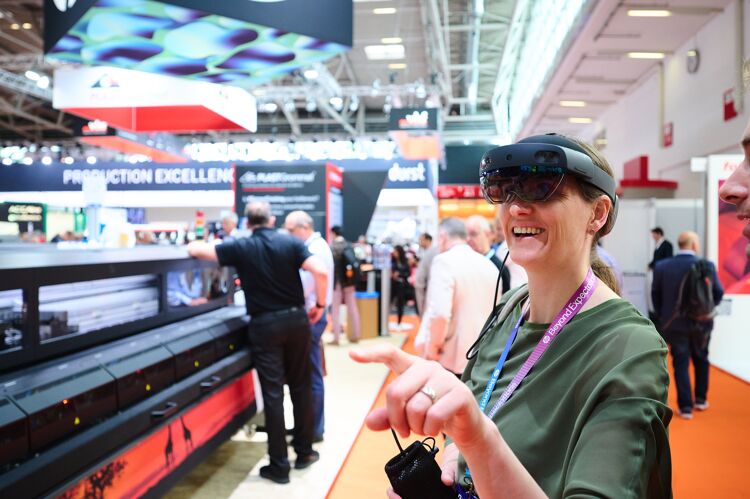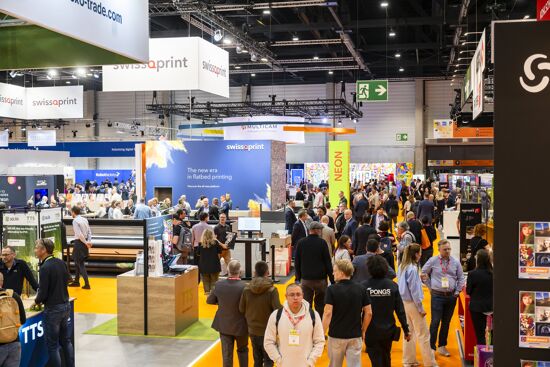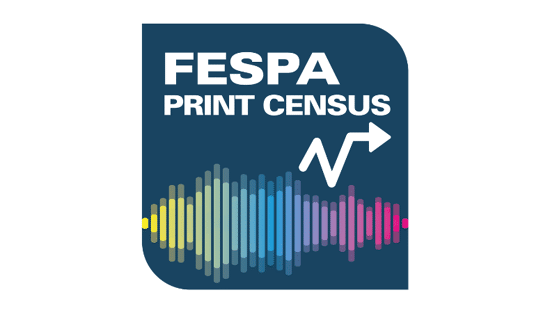Streamlining personalisation with tech: Insights from the SmartHub Conference 2025 speakers

Personalisation Experience 2025 (6 – 9 May 2025, Messe Berlin, Germany) is running its inaugural SmartHub Conference from 6 – 8 May 2025.
It will highlight the importance of using the latest technologies and software across a range of disciplines, to reduce waste and increase operational efficiency, while leveraging the benefits of digital production methods.
Ahead of the event, four keynote speakers – Rusty Pepper, Head of Global Markets & Partnerships, Taylor OnDemand; Lisa Brown and David Sweetnam from FESPA’s Thought Leadership Partner, Keypoint Intelligence; and Frank Piller, Professor of Technology Management at RWTH Aachen University, discuss the impact of technology on personalisation.
What role does technology, such as AI and automation, play in streamlining the personalisation process?
Rusty Pepper: I’m excited for the next-gen APIs and product customisation tools that will be powered by AI, and will unleash a fresh wave of innovation across the POD industry.
The next generation of APIs will leverage AI-driven automation to integrate order data, customer preferences and artwork files across platforms, production hubs and sellers. I expect that they will also use predictive analytics to forecast and anticipate demand, identify emerging trends, accelerate onboardings and assist with making production workflows more efficient. This way, POD companies can focus on growing their businesses.
 Meanwhile, product customisation tools are about to get really powerful, making them game changers for everyone in the POD world. From B2C to B2B, these next-gen customisation tools will still let users upload pictures, add words, tweak colours, or pick design templates – but with AI running in the background. It’ll offer regular users design ideas and tips based on current trends or personal tastes.
Meanwhile, product customisation tools are about to get really powerful, making them game changers for everyone in the POD world. From B2C to B2B, these next-gen customisation tools will still let users upload pictures, add words, tweak colours, or pick design templates – but with AI running in the background. It’ll offer regular users design ideas and tips based on current trends or personal tastes.
Look for advanced features like 3D previews and augmented reality (AR) to show 360-degree viewing, showing users exactly how a product will look before its ordered. Thus, reducing returns and boosting customer happiness.
Lisa Brown: Technology, particularly AI and automation, plays a critical role in streamlining the personalisation process by enabling scalable, error-free, and efficient production workflows. AI facilitates intelligent design customisation, predictive job routing, and automated quality control, reducing manual intervention and production errors. Automation across order intake, prepress, RIP, printing, and fulfilment accelerates turnaround times and supports high-volume, short-run orders with minimal labour. Integrated systems – such as web-to-print platforms, ERP, and production management software – ensure seamless data flow and real-time decision-making. Together, AI and automation empower print service providers to deliver mass customisation with consistency, speed and profitability.
David Sweetnam: AI and automation will play a critical role in the success of a personalisation garment business model enabling a large number of tasks to be handled more efficiently with effective quality control. Workflow will be the critical factor in the success of the personalisation business with integrated AI a key means of ensuring the workflow processes are carried out. Automation and robotics will be the keys to ensuring that the unique requirements of each job are followed correctly – from the picking of the right garment type/size/colour to the association with the correct printed image and the final packaging with shipping instruction.
To learn more about the benefits of personalisation and how you can implement it into your business, I suggest you visit Personalisation Experience 2025!
Frank Piller: Industry 4.0 is very much focused on operational efficiency right now. Most manufacturers see it as a way to do exactly what they were doing before, but more efficiently and less wastefully. In my work in this area, I have advocated that Industry 4.0 should also be seen as a way of strategic differentiation – of doing things differently. Mass customisation is one of the value propositions.
The European Commission now has a big initiative called Industry 5.0. This includes digital manufacturing and connected supply chains, but the focus is on better working conditions for the workforce and more sustainability. I like this expansion, but not the term. With Thomas Gries, a colleague from RWTH Aachen University, we coined the term “Industry 4.U” as our vision to take Industry 4.0 beyond operational efficiency by putting people and the planet at the centre. The various mass customisation strategies we discussed earlier, especially when AI comes into play, are a big value driver in this context.
In addition, Personalisation Experience 2025 visitors will also gain free access to its co-located events, FESPA Global Print Expo and European Sign Expo, where they can discover the latest solutions in the speciality print, signage and visual communications industries.
For more information on Personalisation Experience 2025, the SmartHub feature, and to register, visit: www.personalisationexperience.com.
Topics
Interested in joining our community?
Enquire today about joining your local FESPA Association or FESPA Direct
Recent news
.jpg?width=550)
Winners of FESPA Awards 2025 announced
FESPA has announced the winners of the 2025 FESPA Awards during the official ceremony at FESPA Global Print Expo 2025 (Messe Berlin, Germany).

Barcelona announced as host city for FESPA Global Print Expo and co-located events
FESPA has today announced that its flagship annual FESPA Global Print Expo and co-located events (European Sign Expo and Personalisation Experience), will take place at the Fira de Barcelona, Spain, from Tuesday 19 – Friday 22 May next year.

FESPA Print Census returns in 2025 with a refreshed approach to exploring industry trends
FESPA has announced the relaunch of its Print Census, involving a new and more frequent approach to gathering and sharing vital industry intelligence with its members.

Special Effects in DTF: How Neon Inks Are Making Apparel Pop
Neon fluorescent inks are the latest innovation in DTF printing, offering vibrant, eye-catching effects under both daylight and UV light, giving apparel decorators a competitive edge. Testing shows good wash durability, though market perception of added value is still developing. With increasing adoption and ongoing technological advancements, neon represents a significant upgrade for creative customisation.